ഇന്ത്യന് പനകളുടെ വാണിജ്യസാധ്യതകള്
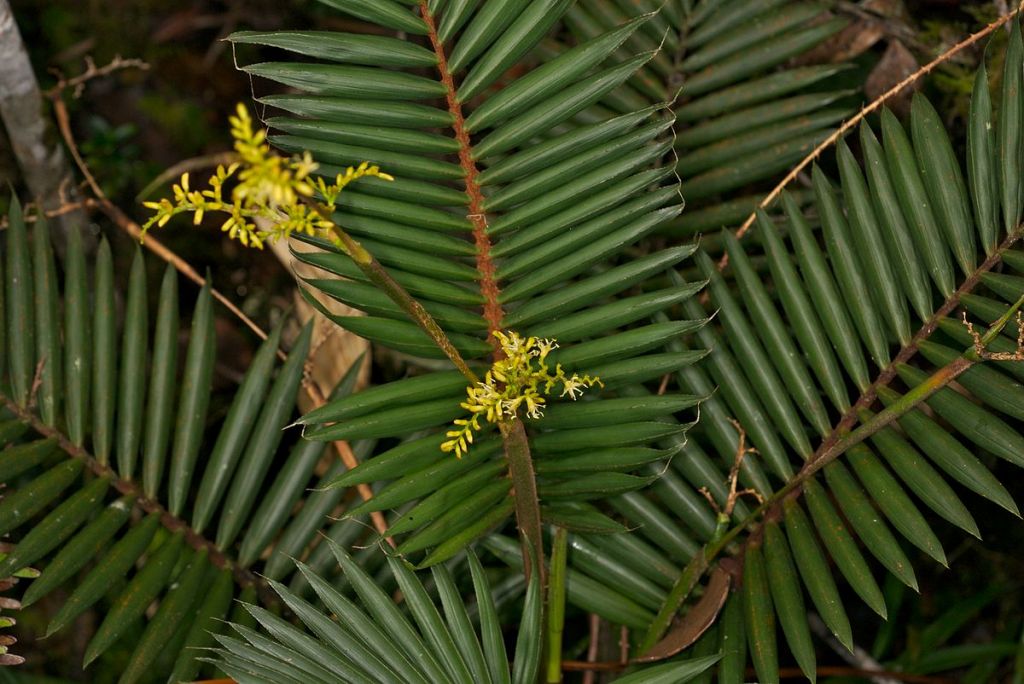
പൊതുവെ നാമറിയുന്ന പനവര്ഗ്ഗങ്ങള് നാളീകേരവും (Cocos nucifera) അടയ്ക്കയും (Areca catechu) ഈന്തപ്പനയും (Phoenix dactylifera) എണ്ണപ്പനയും (royal- Oreodoxa sp) ,ടേബിള് പനകളും (livistona chinensis) കുറച്ച് മറ്റ് അലങ്കാരപ്പനകളുമാണ്. എന്നാല് ഗ്രാമീണര് അറിയുന്ന മറ്റു ചില പനകളുണ്ട്. ടാഡ് ( Borassus flabellifer) ,ബേര്ലി മാഡ്( Caryota urens), ഷിന്ഡി (Phoenix sylvestris) എന്നിങ്ങനെ. ശര്ക്കരയും കള്ളും ഉത്പ്പാദിപ്പിക്കാന് കഴിയുന്ന വിശിഷ്ട സസ്യങ്ങളാണിവ. ഗുജറാത്തിലും രാജസ്ഥാനിലും തമിഴ്നാട്ടിലും ടാഡില് നിന്നും ഷിന്ഡിയില് നിന്നും ശര്ക്കര ഉത്പ്പാദിപ്പിക്കുന്ന രീതി ഇപ്പോള് അന്യമായിക്കൊണ്ടിരിക്കയാണ്.
ശാഖകളില്ലാതെ ഒറ്റത്തടിയായി വളരുന്ന (monocots) ട്രോപ്പിക്കല് പനകള് 200 ജനറകളിലായി 2779 സ്പീഷീസുകളുണ്ട്. പല പ്രദേശങ്ങളിലും അവിടത്തെ ജനതയുടെ ഭക്ഷണവും വിറകും വീടുവയ്ക്കാനുള്ള ഉത്പ്പന്നവും മരുന്നും പന തന്നെയാണ്. അപ്പര് മീസോസോയിക് ഈറയിലെ ക്രിറ്റേഷ്യസ് കാലം മുതലെ പനകള് ഭൂമിയിലുണ്ട്. Aracaceace കുടുംബത്തില്പെട്ട Areca വര്ഗ്ഗത്തിലാണ് ഇവ ഉള്പ്പെടുന്നത്. അടയ്ക്ക, അഡിക എന്നൊക്കെയുളള പേരില് നിന്നാവണം ഈ ജനറിക് വിളിപ്പേരുവന്നത്.
ഇന്ത്യന് പനകളുടെ വൈവിധ്യം
26 ജനറകളിലായി 96 ഇനം പനകള് ഇന്ത്യയിലുണ്ട്. ആന്ഡമാന് നിക്കോബാര് വനങ്ങളിലും വടക്കു കിഴക്കേ ഇന്ത്യയിലും വടക്കന് ഹിമാലയത്തിലും പശ്ചിമഘട്ടത്തിലുമാണ് കൂടുതല് പനകളും കാണപ്പെടുന്നത്. Nypa fructicans, Phoenix paludosa എന്നിവ സുന്ദര്ബന്സിലും ആന്ഡമാന് നിക്കോബാറിലെ കണ്ടല്ക്കാടുകളിലും ഒറീസയിലും കാണപ്പെടുന്നു. Hyphaene dichotoma ഗോവ-സൗരാഷ്ട്ര തീരത്ത് കാണപ്പെടുന്ന പനയാണ്. Fish tail palm (Caryota sp.) പൂര്ണ്ണ വളര്ച്ചയെത്തിയശേഷം മുകളില് നിന്നും കുലകളുണ്ടാകുന്ന ഇനമാണ്. Caryota urens ധാരാളമായി കാണപ്പെടുന്ന ഇനമാണ്. എന്നാല് C.obtusa വടക്കു കിഴക്കന് ഇന്ത്യയിലും C.mitis ആന്ഡമാന്-നിക്കോബാറിലും മാത്രമേയുള്ളു.
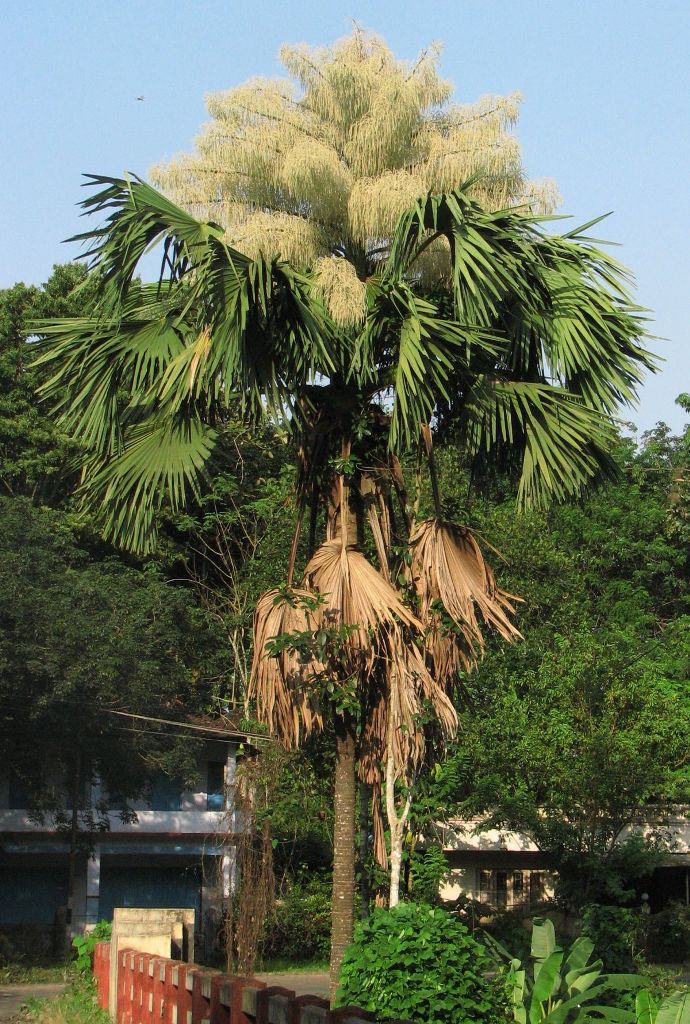
ഇന്ത്യന് പനകളുടെ പ്രാദേശിക വിപണി
Rattans ന്റെയും Phoenix dicksonii യുടെയും തടിയും ഇലയും ആദിവാസികള് വീടുവയ്ക്കാന് ഉപയോഗിക്കുന്നു. ഇലകൊണ്ട് പായും ഉണ്ടാക്കും. ഇലയും ഈര്ക്കിലും ചൂല്,കുട്ട,വട്ടി, ബ്രഷുകള്,തൊപ്പി എന്നിവ ഉണ്ടാക്കാനും ഉപയോഗിക്കുന്നു. വടക്കു കിഴക്കേ ഇന്ത്യയില് Kitul densiflora യുടെ ഇല കുതിരക്കുട്ടികളുടെ ഭക്ഷണമായി ഉപയോഗിച്ചുവരുന്നു. Corypha ജീനസില്പെട്ട പനകളുടെ തടിയുടെ ഉള്ഭാഗം സ്റ്റാര്ച്ചിന്റെ വലിയ കലവറയാണ്. പനയുടെ പിത്ത് ഉണക്കിപൊടിച്ച് ബ്രഡ് ഉണ്ടാക്കാന് ഉപയോഗിക്കാറുണ്ട്. Corypha urens,C.obtusa,Wallichia disticha,B.condapanna എന്നിവയുടെ മണ്ടഭാഗം ചവച്ചുതിന്നാനും പാചകം ചെയ്യാനും ഉപയോഗിക്കുന്നു. അതുകൊണ്ടു തന്നെ ഇവ അന്യം നിന്നു പോകുന്ന അവസ്ഥയിലാണ്. B.condapanna യുടെ ഇളംമണ്ട ആനക്ക് പ്രിയപ്പെട്ട ഭക്ഷണമാണ് എന്നതിനാല് ആനയില് നിന്നും രക്ഷപെടാന് ഇവ വളരുന്നത് മലകളുടെ ചരുവുകളിലാണ്. B.flabellifer,C.urens,Arenga saccharifera,A.wightii(Dudsal) ,N.fructicans എന്നിവയുടെ കൂമ്പില് നിന്നും മുറിവുണ്ടാക്കി എടുക്കുന്ന മധുരപാനീയം ഫെര്മെന്റ് ചെയ്ത് നാടന് മദ്യം ഉണ്ടാക്കാറുണ്ട്. വനമേഖലയില് വന്തോതില് മദ്യ ഉത്പ്പാദനം നടക്കാറുണ്ട്. Tad palms, Rattans,Nipa എന്നിവയുടെ ഇളംവിത്തുകള് ഒരു പ്രധാന ഭക്ഷണ ഇനമാണ്. മുംബയിലെ തെരുവ് കടകളില് Tad golas പതിവാണ്. വടക്ക് കിഴക്കന് സംസ്ഥാനങ്ങളില് Areca triandra,A.nagensis,Pinanga sps എന്നിവ അടയ്ക്കക്കു പകരമായി ഉപയോഗിക്കാറുണ്ട്. Tambols എന്നാണ് ഇതിനെ പറയുക.
Corypha umbraculifera യുടെ കട്ടിത്തോട് വെജിറ്റബിള് ഐവറി എന്നാണറിയപ്പെടുന്നത്. ഇത് ഉപയോഗിച്ച് പല മിനിയേച്ചര് രൂപങ്ങളും കൊത്തിയെടുക്കാറുണ്ട്. Calamus ഒഴികെയുള്ള കാട്ടുപനകള് പ്രത്യേക പരിസ്ഥിതിയിലെ കാണുകയുള്ളു. ഇത്തരത്തില് പ്രത്യേക ഇടങ്ങളില് മാത്രം കാണുന്ന 24 ഇനം endemic പനകള് ഇന്ത്യയിലുണ്ട്. മനുഷ്യരുടെ ഇടപെടല് മൂലവും കാലാവസ്ഥ വ്യതിയാനം മൂലവും വിവിധയിനം പനകള് അന്യം നിന്നുപോവുകയാണ്.
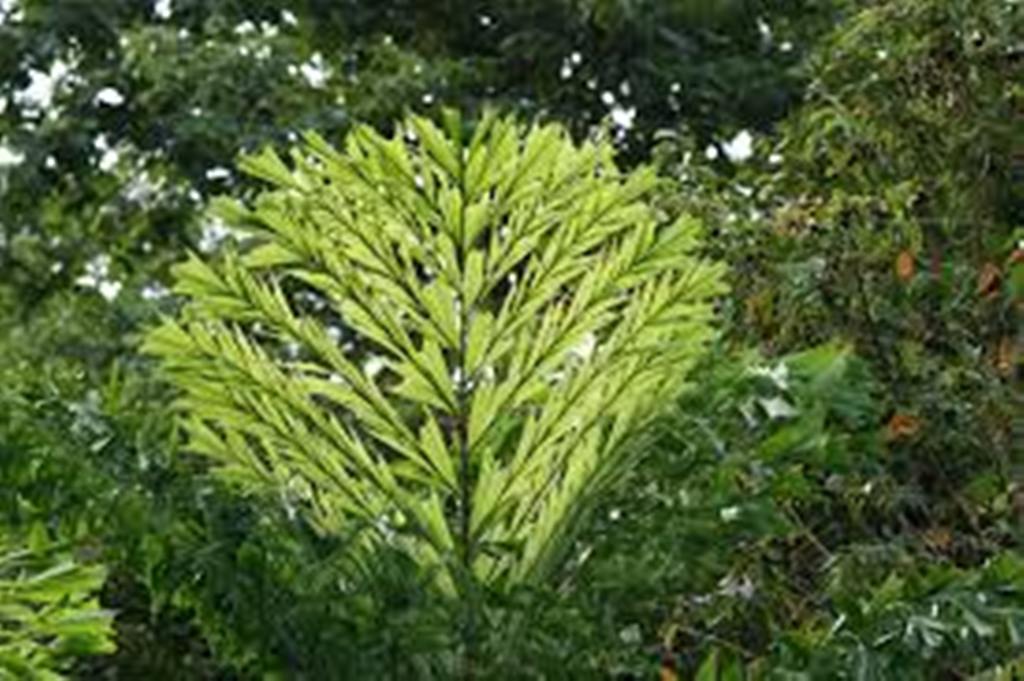
അന്യം നിന്നുപോവുന്ന ഇന്ത്യന് പനകള്
T.takil (ജാമര്) ഹിമാലയത്തിലെ കുമോണ് പ്രദേശത്തു കാണുന്ന എന്ഡമിക് ഫാന് പാമാണ്. ഇത് മഞ്ഞിനെ അതിജീവിക്കുന്ന ഇനമാണ്. Trachycarpus martianus ( peacock feather palm) നോര്ത്ത് ഈസ്റ്റിലെ ഖാസികുന്നുകളിലാണ് കാണപ്പെടുന്നത്. ഇതിന്റെ ഇല മയില്പീലി പോലെ ഇരിക്കും. Corypha umbracaulifera (tale palm or tad patri) പശ്ചിമഘട്ടത്തിലെ എഴുത്തോലയാണ്. ഇവ ഇപ്പോള് തീരെ ഇല്ലാതായിരിക്കുന്നു. Livistona jenkensiana (common table palm) ന്റെ അതേ സ്വഭാവമുളള കാട്ടുപനകളുമുണ്ട്. ആസാമിലും അരുണാചല് പ്രദേശിലുമാണ് ഇവ കാണപ്പെടുന്നത്. തൊപ്പിയുണ്ടാക്കാനും ബോട്ടിന് മേല്ക്കൂരയുണ്ടാക്കാനും ഇവ ഉപയോഗിക്കുന്നു. Hypaene dichotoma(Doum palm/ ravan tad) ഗോവയിലും സൗരാഷ്ട്രയിലും മണലില് പിടിക്കുന്നതാണ്. ദിയുവിലും ധാരാളമായി കാണാം. പോര്ച്ചുഗീസുകാര് ആഫ്രിക്കയില് നിന്നും കൊണ്ടുവന്നതാണ് ഇവ. ഇതിന്റെ വിത്തില് എണ്ണ ധാരാളമായുണ്ട്. കപ്പലിലെ വിളക്കുകള് കത്തിക്കാന് ഇന്ധനമായി ഇത് ഉപയോഗിച്ചിരുന്നു. Phoenix rupicola, T.anders,P.robusta(മറാത്തിയില് ഷേലു എന്ന് പേരുവിളിക്കും ) എന്നിവയും നാശം നേരിടുന്നവയാണ്. P.rupi വളരെ മനോഹരമായ ഇലകളുള്ള സിക്കിം പനയാണ്. P.robusta ഡക്കാണ് പ്ലേറ്റോയിലും പരഷ്നാഥ് കുന്നിലും ബീഹാറിലും കാണപ്പെടുന്നു. വണ്ണമുള്ള തടിയും വിശറിപോലെയുള്ള ഇലകളുമാണ് ഇതിന്റെ പ്രത്യേകത. ഇതിന്റെ ഫലം സ്വാദിഷ്ടമാണ്. കാട്ടുപന്നികള്ക്ക് ഏറ്റവും പ്രിയപ്പെട്ടതും.
W.disticha ഉത്തരാഞ്ചല്,സിക്കിം,മേഘാലയ, ആസ്സാം എന്നിവിടങ്ങളില് കാണപ്പെടുന്നു. ഇതിന് രണ്ടുവശവും കിരീടമുള്ള വിശിഷ്ടമായ ഇലയാണുള്ളത്. ഇവയുടെ സ്വാദിഷ്ടമായ മണ്ട നാട്ടുകാര് ഭക്ഷണമാക്കുന്നതിനാല് എണ്ണം നാള്ക്കുനാള് കുറഞ്ഞുവരുകയാണ്. ഖാസി ആദിവാസികള് സുവര് എന്നു വിളിക്കുന്ന Caryota obtusa യുടെ ഉണങ്ങിയ തടിയിലെ പിത്ത് നാട്ടുകാര് ഭക്ഷണമായി ഉപയോഗിക്കുന്നു. Areca nagensis മനോഹരമായ ഇലകളോട് കൂടിയവയായതിനാല് വളര്ത്താന് മികച്ചതാണ്. പശ്ചിമഘട്ടത്തില് കേരളത്തിലും തമിഴ്നാട്ടിലും 1300-1800 മീറ്റര് ഉയര്ന്ന പ്രദേശങ്ങളില് കാണുന്ന ,മനോഹരമായ പൂക്കളും ഇലകളുമുളള Bentinckia condapanna യുടെ ഫലങ്ങളും മനോഹരങ്ങളാണ്. വിത്തുമുളക്കുമെങ്കിലും നാട്ടുകാരും കാട്ടാനയും കൂടി ഇളം മണ്ട കഴിക്കുന്നതിനാല് ഇവ തീരെ ഇല്ലാതായി. തേയിലത്തോട്ടങ്ങളുടെ വരവും നാശത്തിന് കാരണമായി. ഇവ നട്ടുവളര്ത്താവുന്ന ഇനമാണ്. ഇതിന്റെ അതേരീതിയിലുള്ള ഒന്നാണ് b.nicobarica .നിക്കോബാറിലെ കട്ചല് ദ്വീപിലാണ് ഇവ കാണപ്പെടുന്നത്.

ഇന്ത്യന് പനകളുടെ വാണിജ്യ സാധ്യതകള്
മിക്ക ഇനം പനകളും അലങ്കാര ചെടികളായി ഉപയോഗിക്കാവുന്നവയാണ്. C.urens, Licuola peltata,L.spinosa.C.umbracaulifera,C.elata, Caryota mitis എന്നിവ മികച്ച ഗാര്ഡന് സസ്യങ്ങളാണെങ്കിലും വേണ്ടവിധം ചിട്ടയായ പ്രോത്സാഹനം ലഭിച്ചിട്ടില്ല. പല പനകളും അവയുടെ സ്വാഭാവിക പരിസ്ഥിതിയില് നിന്നും പുറത്തുകൊണ്ടുവന്ന് നഗരങ്ങളുടെ സൗന്ദര്യവത്ക്കരണത്തിന് ഉപയോഗിക്കാവുന്നതാണ്. ഇതുവഴി ജേംപ്ലാസം സംരക്ഷിക്കുന്നതോടൊപ്പം ഒരു ഇക്കണോമിക് ആക്ടിവിറ്റിയുമാകും. ഇന്ത്യയില് പ്രധാന ഇടങ്ങളില് പനകളുടെ ജേംപ്ലാസം കേന്ദ്രങ്ങള് സ്ഥാപിച്ചാല് ആവശ്യത്തിന് വിത്തുകളും തൈകളും വിതരണം ചെയ്യുകയും ഉപയോഗക്രമങ്ങള് പൊതുജനങ്ങള്ക്ക് പരിചയപ്പെടുത്തി കൊടുക്കുകയും ചെയ്യാന് കഴിയും. ഇപ്പോള് ഭുവനേശ്വറിലും തിരുവനന്തപുരം പാലോട് ട്രോപ്പിക്കല് ബൊട്ടണിക്കല് ഗാര്ഡനിലുമാണ് ഇത്തരം കേന്ദ്രങ്ങള് പ്രവര്ത്തിക്കുന്നത്. കാട്ടുപനകളുടെ വിത്തും തൈകളും വില്ക്കാന് ആദിവാസികളെ ഉള്പ്പെടുത്തി പ്രാദേശിക കേന്ദ്രങ്ങള് തുടങ്ങിയാല് പനപ്രേമികള്ക്ക് ഉപകാരപ്പെടും, ഒപ്പം ആദിവാസികള്ക്ക് വരുമാനവുമാകും. 44 ഇനം scrambling rattans (Calamus sp)ഇന്ത്യയിലുണ്ട്.ഇതില് 14 എണ്ണവും അന്യം നിന്നുപോകാവുന്ന അവസ്ഥയിലാണ്. ഏഴ് എണ്ണം കൊമേഴ്സ്യലായി ഉപയോഗിക്കുന്നുണ്ട്. ഇതുവഴി 3 ലക്ഷത്തിലേറെ ആളുകള്ക്ക് തൊഴിലും ലഭിച്ചു. പീച്ചിയിലെയും ഡറാഡൂണിലെയും വനഗവേഷണ സ്ഥാപനങ്ങള് രത്തന്സിനെ കുറിച്ച് ചില വിവരങ്ങള് നല്കുന്നുണ്ട്. എന്നാല് ഇത് കുറേക്കൂടി ഗൗരവമായികണ്ട് ഒരു national institute of rattans ആരംഭിക്കേണ്ടതുണ്ട്. N.fruticans എന്ന ഉപ്പുപ്രദേശത്തെ പനകളില് നിന്നും നല്ല മധുരക്കള്ളാണ് ലഭിക്കുന്നത്. കേരളത്തിലും ചെന്നൈയിലും ചതുപ്പുകളില് ഇവ വച്ചുപിടിപ്പിക്കാന് ശ്രമം നടന്നുവരുന്നു. വന്തോതിലുള്ള വ്യവസായ സാധ്യതയാണ് ഇതിനുള്ളത്.ചതുപ്പുകളിലെ മണ്ണൊലിപ്പും തടയാന് കഴിയും. H.dichotoma തീരപ്രദേശത്ത് കാര്യമായി വച്ചുപിടിപ്പിച്ചാല് അതൊരു ഷെല്റ്റര് ബല്റ്റാക്കി മാറ്റാന് കഴിയും.പ്രദേശത്തിന്റെ സൗന്ദര്യവത്ക്കരണത്തിനൊപ്പം ഇതില് നിന്നും ലഭിക്കുന്ന എണ്ണ ബയോഡീസലായും ഉപയോഗിക്കാം. മലേഷ്യയും ഫിലിപ്പൈന്സും വന്തോതില് ഇവ വച്ചുപിടിപ്പിച്ചിട്ടുണ്ട്. ഇത്തരം പ്രവര്ത്തികളില് സന്നദ്ധസംഘടനകള്, കോര്പ്പറേറ്റുകള് എന്നിവരുടെ സഹായവും തേടാവുന്നതാണ്.
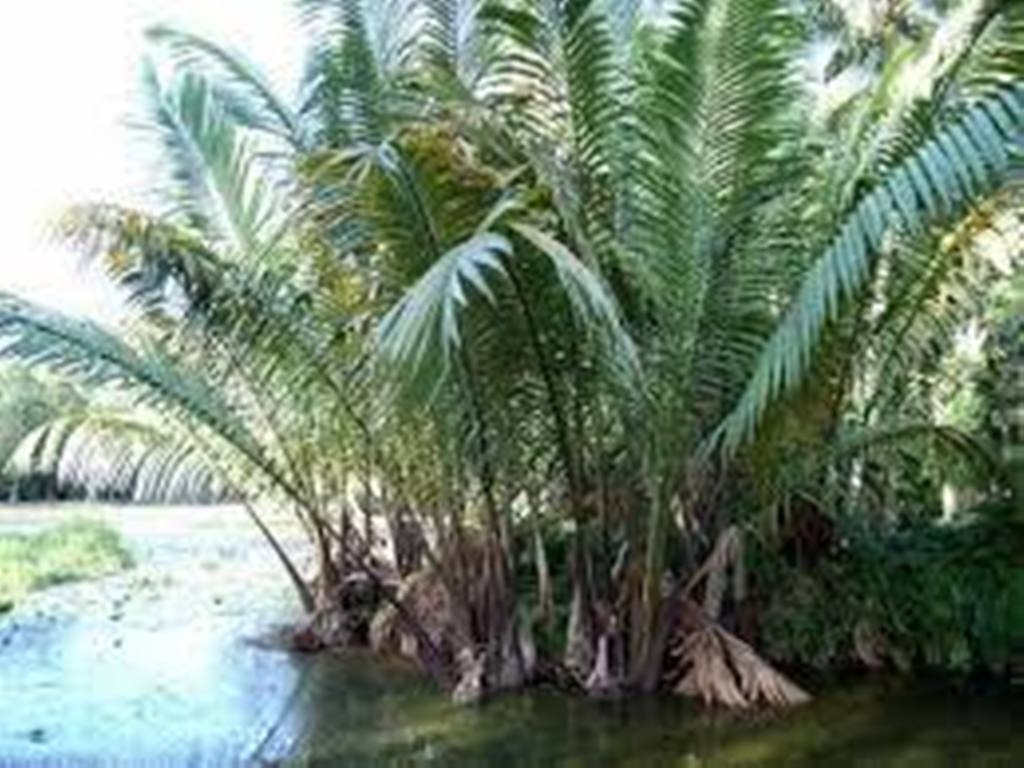
Commercial possibilities of Indian palms
Commonly known palm species are Cocos nucifera, Areca plants (Areca catechu), Palm (Phoenix dactylifera), Oilseeds (Royal- Oreodoxa sp), Table palm (livistona chinensis) and a few other decorative plants. But there are some other palms that the villagers know about.They include Tad (Borassus flabellifer), bhirly- mad (Caryota urens) and shindhi (Phoenix sylvestris). These are excellent plants that can produce jaggery and toddy. In Gujarat, Rajasthan, Tamil Nadu, the production of jaggery from tad and shindi is now becoming rare.
These monocots growing without branches have 2779 species in 200 genera. In many places, the food ,fuel,building materials and medicine of the native population is palm and none other. Palms have been on the earth since the Cretaceous of the Upper Mesozoic Era. They belong to the Areca genus of the Aracaceace family. This generic nickname must have come from the name of "Adakka" and "Adika".
Diversity of Indian palms
There are 96 species of palms in 26 genres. Most of the palms are found in the Andaman and Nicobar forests, North-eastern India, Northern Himalayas and Western Ghats. Nypa fructicans and Phoenix paludosa are found in the Sundarbans and in the Andaman and Nicobar forests. Phoenix paludosa is found in Orissa and Hyphaene dichotoma on the Goa-Saurashtra coast. Fish tail palm (Caryota sp.) is a species having bunch of flowers that grow from top to bottom. Caryota urens are the most abundant breed. C.obtusa is only found in northeastern India and C.mitis in Andaman-Nicobar.
Local market for Indian palm trees
The wood and leaves of the Rattans and Phoenix dicksonii are used to build houses by aborigines. They make leaf mats also. The leaves and leaf stick are also used to make brooms, kuttas, utensils, brushes and hats. In north-eastern India, the foliage of W.densiflora are used as food for ponies. The trunk of the Corypha genus palm tree contains a large stack of starch. The pith of the palm is used to make bread after drying it. The stem apices of Corypha urens, C.obtusa, Wallichia disticha, and B.condapanna are used for chewing and cooking. They are therefore in a state of extinction. Since B.condapanna's shoot is a favorite food for elephants, it grows on the slopes of mountains to escape elephants. Fermented sweet drinks taken from the stumps of B.flabellifer, C.urens, Arenga saccharifera, A.wightii (Dudsal) and N.fructicans are used for making country liquor. Liquor is produced in large quantities in the forest area. Tad palms, Rattans, and Nipa young leaves are an important food item. Tad golas are common in street shops in Mumbai. Areca triandra, A.nagensis and Pinanga sps are used as a substitute for areca nut in the northeastern states. It is called Tambols.
The hard cover seeds of Corypha umbraculifera are known as vegetable ivory. Many miniature forms are carved using it. Except for Calamus, wild varieties can only be found in its particular environment. There are 24 species of endemic palms in India which are found only in specific areas. Due to human intervention and climate change, many species become extinct.
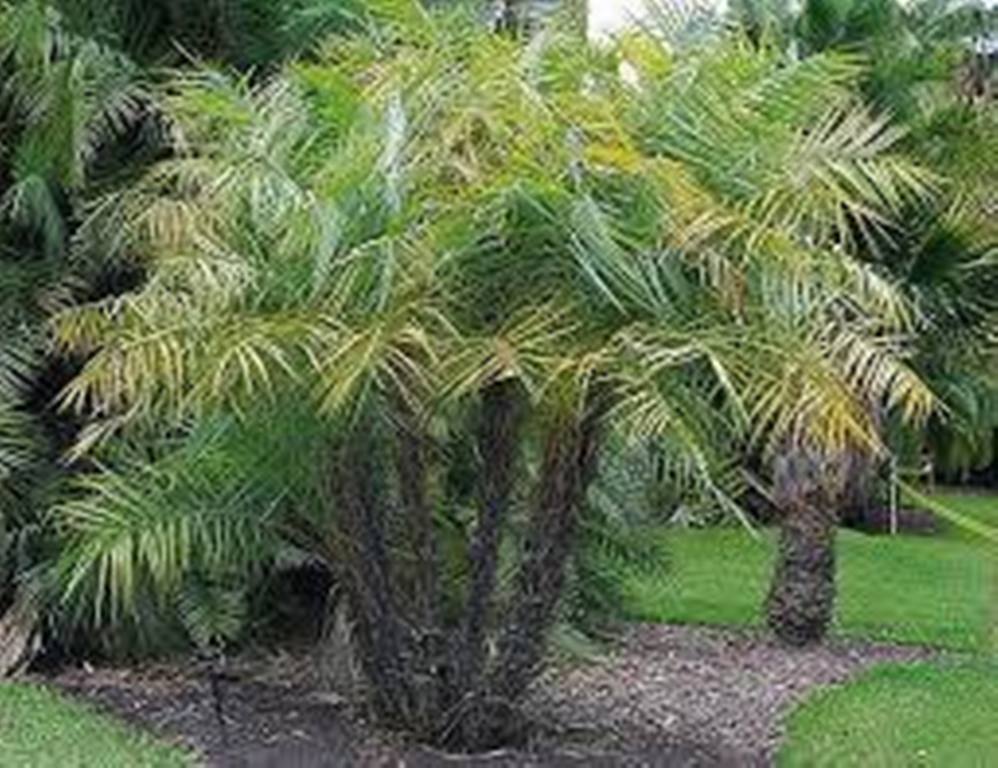
Important endemic and endangered palms of India
T.takil (jammer) is an endemic fan palm found in the Kumon region of the Himalayas. It is a species that survives in the snow. T.martianus (peacock feather palm) is found in the Khasi hills of the North East. Its leaves are like a peacock. C.umbracaulifera (tale palm or tad patri) was a type present in Western Ghats. These are now completely gone. There are also wild species of the same nature as Livistona jenkensiana (common table palm). They are found in Assam and Arunachal Pradesh. They are used to make hats and to cover the boat. Hypaene dichotoma (Doum palm / ravan tad) grows in sand in Goa and Saurashtra.They are in abundance in Diu. These were brought by the Portuguese from Africa. Its seeds are rich in oil. It was used as fuel to light the ship's lamps. Phoenix rupicola, T.anders, and P.robusta (nicknamed Shelu in Marathi) are also endangered. P.rupi is a Sikkim palm with beautiful leaves. P.robusta is found in the Deccan Plato, Parashnath Hill and Bihar. It is characterized by thick wood and broad leaves. The shoot is delicious and the most loved of by wild beasts.
W.disticha is found in Uttaranchal, Sikkim, Meghalaya and Assam. It has a distinctive leaf with a crown on both sides. As the shoots are delicious and eaten by locals, the numbers are dwindling. The dry wooden pith of the Caryota obtusa, known as the Suhar by the Khasi tribes, is used by the natives as food. Areca nagensis are great for growing because they are full of beautiful leaves. Bentinckia condapanna, with its beautiful flowers and leaves, is found in the high altitudes of 1300-1800 m in the Western Ghats of Kerala and Tamil Nadu. The natives and the animals like its tender shoots,it couldn't survive from their eyes. The influx of tea plantations also caused its destruction. These are cultivable species. B.nicobarica ,its sister variety is found on the Kutchel Island of Nicobar.
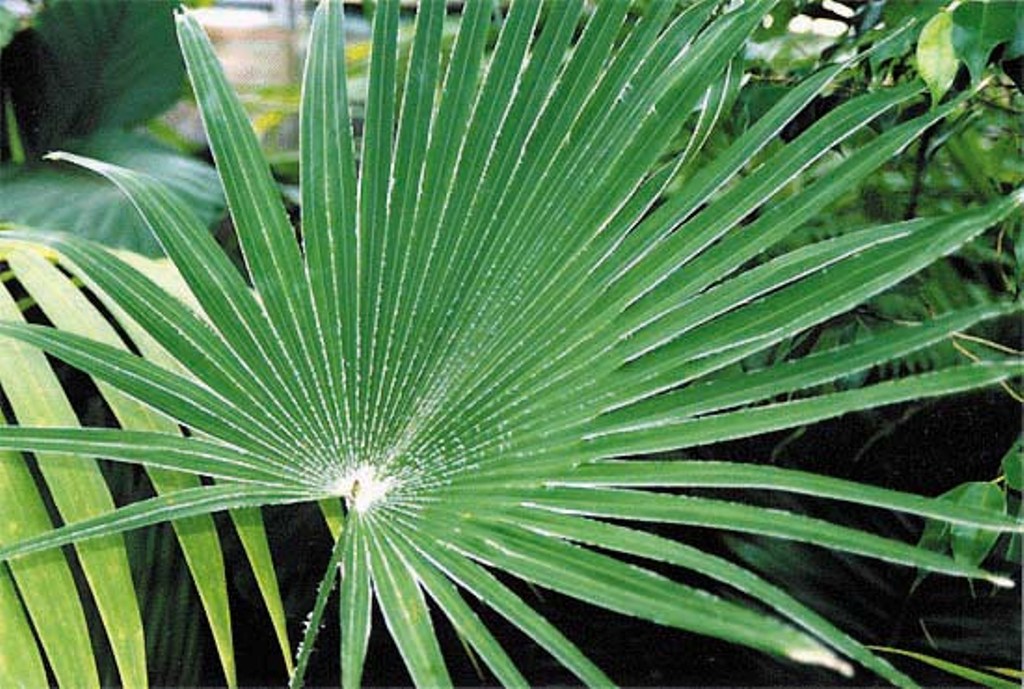
The commercial potential of Indian palms
Most varieties of palm trees can be used as ornamental plants. C.urens, Licuola peltata, L.spinosa.C.umbracaulifera, C.elata, and Caryota mitis are excellent garden plants, but are not properly promoted. Many palms can be taken out of their natural environment and used for beautification of cities. This will be an economic activity in addition to preserving the germplasm. Setting up of a few germplasm centres for indian palms in suitable bio-geographic regions would ensure regular supply of their seedlings and saplings along with necessary know-how for their upkeep. At present, such centers are located in Bhubaneswar and Thiruvananthapuram Palode Tropical Botanical Garden. Starting decentralized nurseries as regional centers in the native habitats will help forest dwellers economically as they can raise seedlings stocles of wild palms and can sell to palm lovers.There are 44 species of scrambling rattans (Calamus sp) in India, of which 14 are endangered. Seven are used commercially. More than 300,000 people were given jobs in palm industry. Forest research institutes in Peechi and Dehradun provide some information about Ratans. But it needs to be taken seriously and a national institute of rattans warrented. The sweet palm is obtained from the palm trees of N.fruticans. Efforts are being made to plant them in swamps in Kerala and Chennai. This is a huge industry opportunity. H.dichotoma can be converted into a shelterbelt if placed on the shoreline. The oil derived from it can also be used as a biodiesel. Malaysia and the Philippines have made huge strides. Government can also seek help from NGOs and corporates in these activities.
(Courtesy - A.R.Kullkarni, formerly in dept. of life science, Mumbai University & R.M.Mulani, LU&MV college, Andheri)
കൂടുതൽ അനുബന്ധ വാർത്തകൾ വായിക്കുക: കാലാവസ്ഥ: സ്വകാര്യ കമ്പനികൾക്ക് കരാർ
English Summary: Commercial possibilities of Indian palms
We're on WhatsApp! Join our WhatsApp group and get the most important updates you need. Daily.
Join on WhatsAppSubscribe to our Newsletter. You choose the topics of your interest and we'll send you handpicked news and latest updates based on your choice.
Subscribe Newsletters






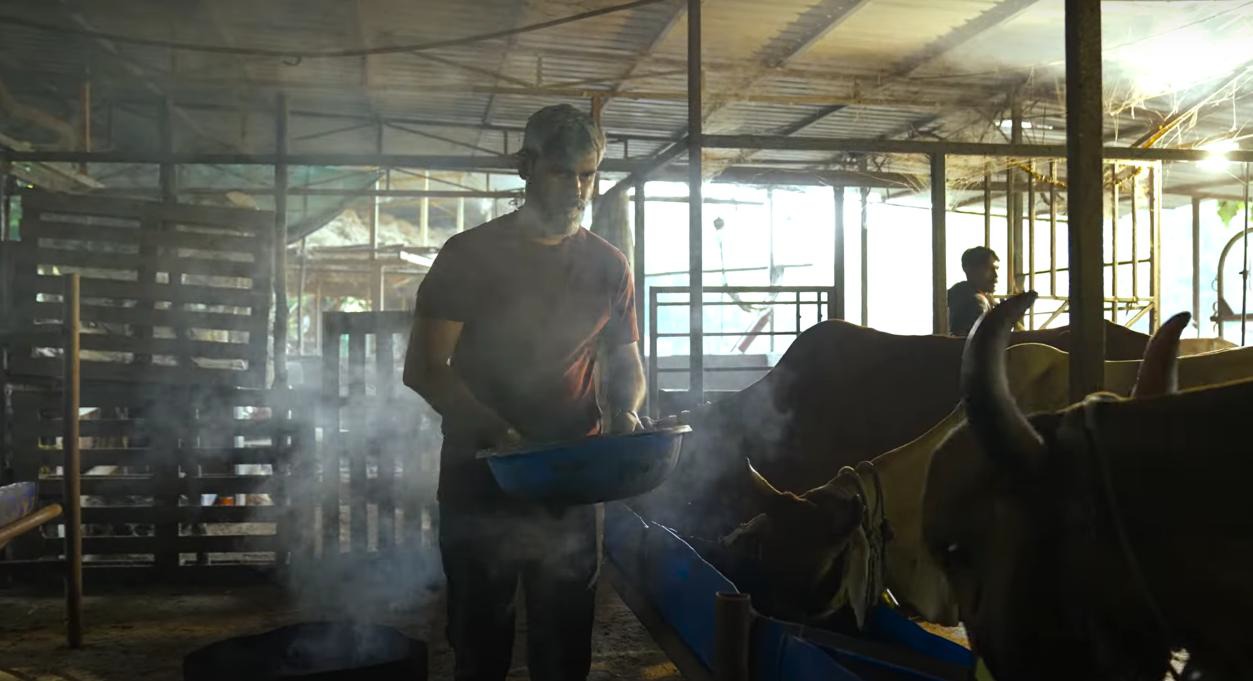

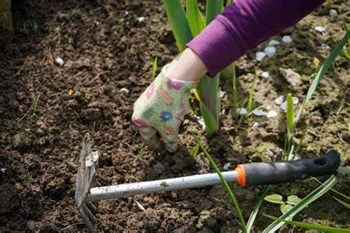



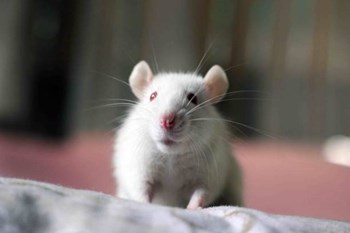












Share your comments